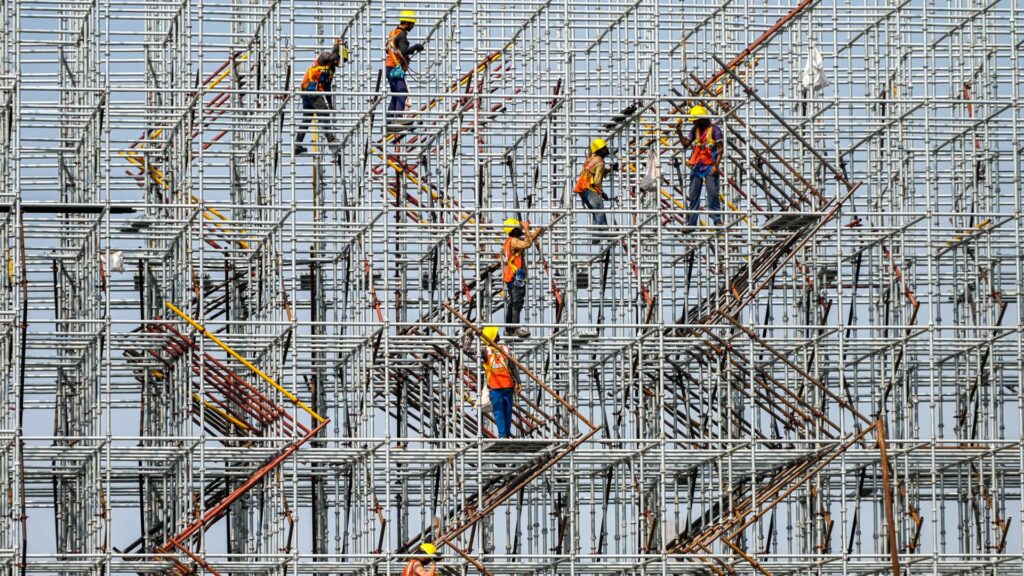On January 12, 2022, workers worked at the construction site of the Mumbai Coastal Highway Project.
Puneet Paranipet | AFP | Getty Images
The Governor of the Reserve Bank of India said that India can achieve sustainable economic growth of up to 8% in the medium term.
His remarks came shortly after data showed that India’s gross domestic product (GDP) growth slowed to 6.7% in the second quarter from 8.2% in the same period last year. These data have increased pressure on the central bank to start a rate-cutting cycle as soon as possible.
Reserve Bank of India (RBI) Governor Shaktikanta Das said in an exclusive interview with CNBC’s Tanvir Gill on Friday that he expects India’s economic growth to reach 7.5% in the next few years. %, “There is a possibility of an increase.”
Das said it was difficult to say what healthy growth would look like in the world’s most populous country, but that in the medium term, growth of 7.5% to 8% “would be sustainable”.
In an August communiqué from the Reserve Bank of India, the Governor highlighted real GDP expectations of 7.2% (adjusted for inflation) in 2024-2025 and the same number in the first quarter of fiscal 2025-2026, risks to both sides It’s all “evenly balanced.”
India has previously been described by the International Monetary Fund as “the world’s fastest-growing major economy”, while Goldman Sachs said India is expected to become the world’s second-largest economy by 2075 – surpassing Japan, Germany and the United States to become the second largest economy in the world. India’s second largest economy to China.
However, India’s growth rate has slowed in recent quarters, and the International Monetary Fund warned in July that the economic expansion could slow to 6.5% in 2025.
In recent months, major central banks including the European Central Bank, the Bank of England and the Swiss National Bank have begun to ease monetary policy.
The Fed is widely expected to join the rate-cutting club later this week, putting further pressure on India to start easing policy.
“This seems to be rate cut season,” Das said. “But seriously, I want to emphasize that our monetary policy will be mainly influenced by our domestic macroeconomic conditions and domestic inflation. [and] Growth momentum and prospects,” he added.

“So, we are governed by it. Yes, of course, what’s going on around us, what the Fed is doing or what the ECB is doing or what some of the other central banks are doing… does affect us and we do look at that,” Das said .
“But, ultimately, our decisions are driven by domestic factors.”
Regarding the governor’s 8% growth forecast, Eswar Prasad, a professor of international trade and economics at Cornell University, told Asia Roadmark on Monday that the number seems more like an “aspiration” at this stage. Rather than a “realistic” goal.
“But India is certainly well-positioned to take advantage of changes in the geopolitical landscape affecting global trade and financial flows,” he said, warning that financial and labor reforms were still needed to attract more foreign capital.
Reserve Bank of India Governor says Fed rate cut will not affect India
Federal Reserve policymakers have laid the groundwork for a rate cut ahead of a two-day meeting on Tuesday. The only remaining question appears to be how much the Fed will cut interest rates.
Some economists believe the Federal Reserve should cut interest rates by 50 basis points, accusing the central bank of tightening monetary policy “too much, too quickly.”
Others called the move “very dangerous” for markets and instead pushed the central bank to cut interest rates by 25 basis points.
“We’re not going to be affected by how much they cut rates, whether it’s 25 or 50, or how often they do it,” Das said of the prospect of the Fed cutting rates.

Asked whether the Reserve Bank of India’s Monetary Policy Committee (MPC) would actively consider a rate cut in early October, Das replied: “No, I can’t say that.”
“We will discuss and take a decision in the Monetary Policy Committee, but in terms of growth and inflation dynamics, I would like to say two things. One, the growth momentum continues to be good, India’s growth story is intact and so far , with inflation in terms of the outlook, we have to look at sequential momentum,” he continued. “Based on that, we will make a decision.”


